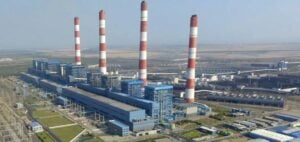China’s coal imports reached 54.98 million tons in November, marking a significant 18.9% increase from the previous month, according to data released by the General Administration of Customs. This figure also represents a 26.4% increase compared to November of the previous year.
Between January and November 2024, cumulative coal imports rose by 14.8%, exceeding 490 million tons. This upward trend is accompanied by a decrease in average prices. In November, the average price of imported coal and lignite stood at $90.15/ton, down from $104.48/ton during the same period in 2023.
Stable Supply from Long-Term Contracts
The increase in imports is mainly attributed to a consistent flow of shipments resulting from long-term contracts signed earlier this year. These regular deliveries have allowed China to maintain a stable supply, effectively meeting heating demands ahead of the winter season.
According to ANZ Research, this import strategy aligns with the country’s efforts to ensure energy security. Despite high stock levels at power plants and ports, authorities continue to prioritize stable supplies through these contracts.
Muted Spot Demand and High Stock Levels
In November, demand for spot coal remained weak, primarily due to high stock levels and competitive domestic prices. Northern ports in China, including Qinhuangdao, Jingtang, and Caofeidian, reported total coal stocks of 30.15 million tons in early December, up from 28.7 million tons a week earlier.
Chinese buyers also exercised caution in purchasing spot shipments, focusing instead on negotiating long-term contracts for the upcoming fiscal year. However, as winter intensifies, a slight uptick in spot demand is anticipated.
A Market Affected by Declining Prices
Prices for coal delivered to China with a calorific value of 5,500 kcal/kg averaged $100.20/ton in November 2024, down from $115.93/ton in November 2023. This trend reflects an oversupply situation and subdued domestic demand, despite economic stimulus measures introduced by the Chinese government.
In conclusion, China’s coal imports continue to be bolstered by long-term contracts, meeting the country’s energy needs. However, the combination of high stock levels and robust domestic production is expected to keep spot demand modest for the remainder of the year.





















